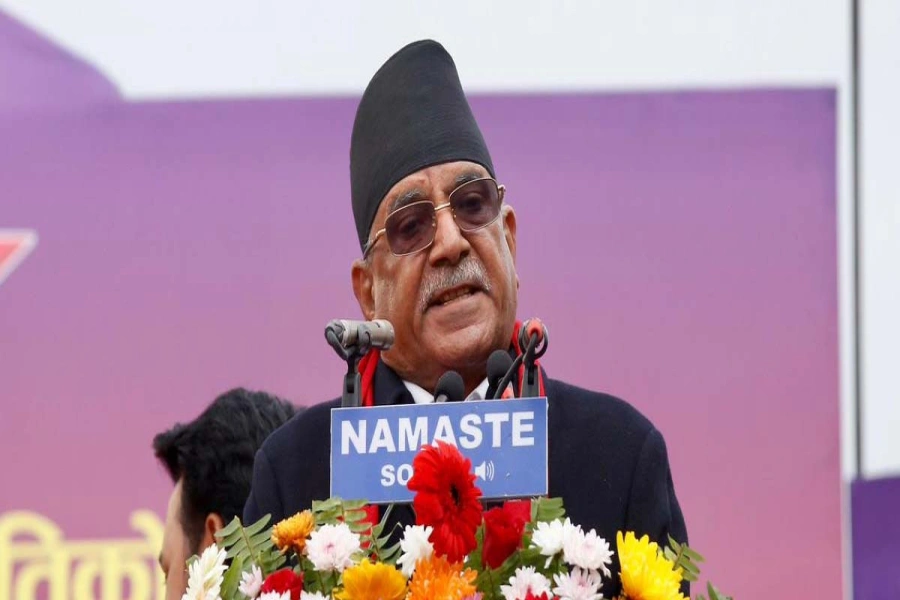The zoo staff tried a few tricks to cheer up the animal, but its extreme penchant for solitude convinced them that only time could bring him back to normalcy. But the hippo continued to remain downcast and has not completely come out of the trauma yet. [break]
Though pampered a lot by its caretakers, a red panda, brought to the zoo five months ago, never seems to be in upbeat mood. According to Dr Bal Krishna Giri, senior veterinary doctor and the chief of animal rescue team at the zoo, the only reason why the panda is lacking in spirit is because of the absence of a company of its kind. “Though it eats well and its health has really improved since coming here, the loneliness really seems to bother him,” Giri said. “The animal feels good when it sees us around, but ultimately what it longs for is a company of the same species.”
Very few animals out of the total 116 species in the zoo, including mammals, reptiles, birds and aquatic creatures, are single currently.
However, the caretakers never fail to notice the lonesome ones that suffer from pangs of loneliness.
“As they live in enclosed space, zoo animals are already in stress. We try our best to keep them happy and normal, but it works better in case of animals that are pair or groups,” said Giri. “Single animals tend to be unhappy. Naturally, everyone needs company and some animals need it even more than others depending on their nature,” he added.
Radhakrishna Gharti, another zoo staff, reveled that single animals have been found to be more prone to disease and illness. According to him, such animals are more aggressive and do not enjoy eating.
“Some animals come here in a pair or group and become alone at some point after others in its group die. But it is rare for a rescued animal to have a company already waiting in the zoo. So, they face loneliness from day one, like the panda.”
Chief of Natural History Museum Karan Shah adds that animals not only face psychological anxiety when they are alone but are also deprived of an opportunity to learn from the natural behavior of their kind.
“Company is needed not just for fun. You learn to behave and many other skills from each other. But when there is nobody to share with or learn from, even animals cannot be acquainted with their own natural behavior.”
Beside the panda and hippo, other lonesome animals in the zoo are an ostrich, a Himalayan Blue sheep and a black bear.
The blue sheep was cheerful until it lost its mother a few months ago. On the other hand, the ostrich has never had the experience of mingling with its like in the zoo as it has been alone since the beginning. And the black bear was rescued by the zoo staffs and has been in the cage alone since.
According to Gyanwali, the zoo officials and staff feel disheartened to see the animals unhappy or living in isolation. However, due to lack of resources and also legal processes, it is not always possible to ensure pairing of certain species. “For instance, we have been trying to add one or more hippos since long. But the process has been delayed due to several reasons, including lack of budget.”
The zoo that stretches over 120 ropanis of land was set up in 1932 by the late Prime Minister Juddha SJB Rana. After the political changes of 1951, the government took over the zoo and it was opened for public only in 1956. Over the years, the zoo´s management changed hands among various government departments. It was handed over to National Trust for Nature Conservation (NTNC) in 1995 for 30 years.
Story of Langoor is different though
Though other animals in the zoo show extreme fondness toward same species, three Langoor monkeys recently set a different example. When all the female members in the family died within this year, the remaining members, a son, father and the grandfather, could no longer live together. They used to fight until they bled.
“The father and the grandfather would not stand each other. They would wrangle all the time, resulting in serious wounds. Then we placed the eldest langoor in a different cage,” said Radhakrishna Gharti. “But then after some weeks we noticed that even the son and the father could not tolerate each other´s presence and began behaving equally aggressively,” he added.
The zoo staff, ultimately, had to keep even the father and the son apart.
Meanwhile, Shah said the lack of female members in the group is one of the reasons behind the hostilities shown by the monkeys toward one another. “There were only three males and monkeys are aggressive by nature. There are biological as well as psychological factors. In order for any animal to behave normally, its natural needs have to be fulfilled.”
Animals at Jawalakhel zoo miss humans, others enjoy the peace




































